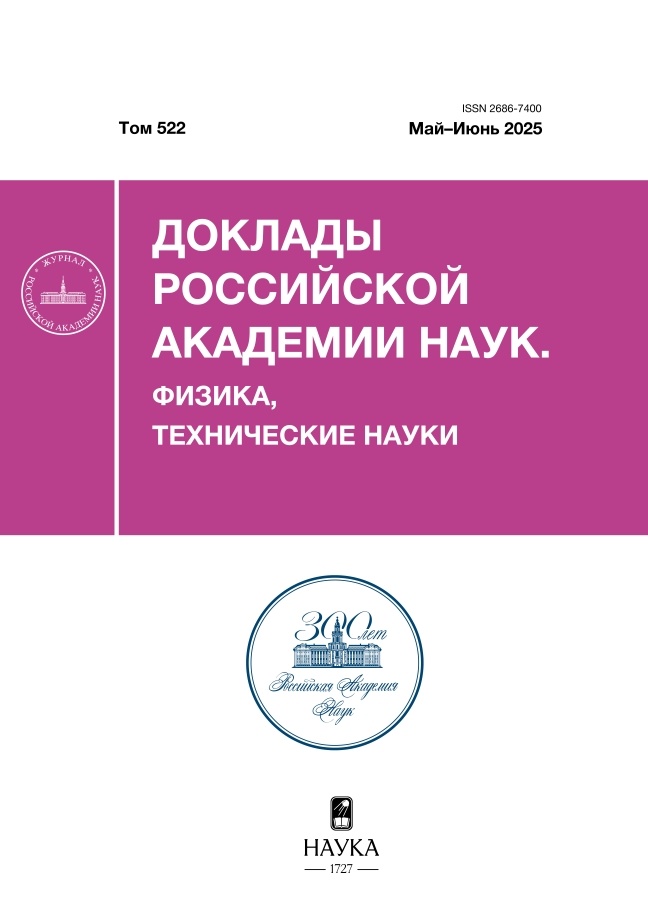Виртуальные гравитационные маневры в баллистическом проектировании межпланетных перелетов
- Авторы: Голубев Ю.Ф.1, Грушевский А.В.1, Тучин А.Г.1, Тучин Д.А.1
-
Учреждения:
- Институт прикладной математики им. М.В. Келдыша Российской академии наук
- Выпуск: Том 522, № 1 (2025)
- Страницы: 39-44
- Раздел: МЕХАНИКА
- URL: https://ter-arkhiv.ru/2686-7400/article/view/689517
- DOI: https://doi.org/10.31857/S2686740025030063
- EDN: https://elibrary.ru/PVUMAP
- ID: 689517
Цитировать
Полный текст
Аннотация
Продолжение в обратном времени решения задачи межпланетного перелета космического аппарата от точки низкой орбиты около планеты отправления порождает траекторию, структурно совпадающую с траекторией виртуального космического аппарата, выполняющего гравитационный маневр около этой планеты. Построенный на ее основе пучок виртуальных пролетных гипербол порождает (после их протяжки до своих перицентров) траектории, незначительно отличающиеся от проектной отлетной орбиты космического аппарата. Тем самым поиск траектории межпланетного перелета может быть отделен от необходимости учета краевых условий старта с промежуточной низкой орбиты вокруг планеты отправления и сведен к моделированию пучка предстартовых виртуальных гравитационных маневров. Предстартовая орбита уточняется затем по результатам поиска траектории межпланетного перелета. Представлена структурно единообразная схема баллистического проектирования траекторий полета космического аппарата с применением многократных гравитационных маневров с учетом эфемерид.
Полный текст
Об авторах
Ю. Ф. Голубев
Институт прикладной математики им. М.В. Келдыша Российской академии наук
Автор, ответственный за переписку.
Email: golubev@keldysh.ru
Россия, Москва
А. В. Грушевский
Институт прикладной математики им. М.В. Келдыша Российской академии наук
Email: alexgrush@rambler.ru
Россия, Москва
А. Г. Тучин
Институт прикладной математики им. М.В. Келдыша Российской академии наук
Email: tag@kiam1.rssi.ru
Россия, Москва
Д. А. Тучин
Институт прикладной математики им. М.В. Келдыша Российской академии наук
Email: den@kiam1.rssi.ru
Россия, Москва
Список литературы
- Охоцимский Д.Е., Сихарулидзе Ю.Г. Основы механики космического полета. М.: Наука, 1990. 448 с.
- Боровин Г.К., Голубев Ю.Ф., Грушевский А.В. и др. Баллистико-навигационное обеспечение полетов автоматических космических аппаратов к телам Солнечной системы / Под ред. А. Г. Тучина. М., Химки: “НПО Лавочкина”, 2018. 336 с.
- Голубев Ю.Ф., Грушевский А.В., Корянов В.В., Тучин А.Г. Гравитационные маневры космического аппарата в системе Юпитера // Известия Российской академии наук. Теория и системы управления. 2014. № 3. С. 149–167.
- Келдыш М.В., Власова З.П., Лидов М.Л. и др. Исследование траекторий облета Луны и анализ условий фотографирования и передачи информации // Келдыш М. В. Избранные труды. Ракетная техника и космонавтика. М.: Наука, 1988. С. 261–309.
- Прикладная небесная механика и управление движением. Сборник статей, посвященный 90-летию со дня рождения Д. Е. Охоцимского / Сост. Т. М. Энеев, М. Ю. Овчинников, А. Р. Голиков. М.: Институт прикладной математики им. М. В. Келдыша РАН, 2010. 368 с.
- Энеев Т.М., Козлов Н.Н. Принцип виртуальных контактов. Метод расчета процесса аккумуляции планет для новой космогонической модели // Препринты ИПМ им. М.В. Келдыша РАН. 1979. № 78.
- Голубев Ю.Ф., Грушевский А.В., Корянов В.В. и др. Баллистическое проектирование многоцелевых полетов к Венере // Известия Российской академии наук. Теория и системы управления. 2019. № 4. С. 154–174. https://doi.org/10.31857/S000233880003501-0
- Суханов А.А. Астродинамика. М.: Институт космических исследований РАН, 2010. 202 с.
- Yoder C.F. Astrometric and Geodetic Properties of Earth and the Solar Systems// Global Earth Physics: A Handbook of Physical Constants / Ed. T.J. Ahrens. Washington, DC: AGU, 1995. P. 1–31.
- Голубев Ю.Ф., Грушевский А.В., Корянов В.В. и др. Обобщение формулы Резерфорда для синтеза цепочек гравитационных маневров // Доклады РАН. Физика, технические науки. 2021. Т. 501. С. 5–7.
- Тарасов Е.В. Космонавтика. Механика полета и баллистическое проектирование. М.: Машиностроение, 1977. 216 с.
Дополнительные файлы














